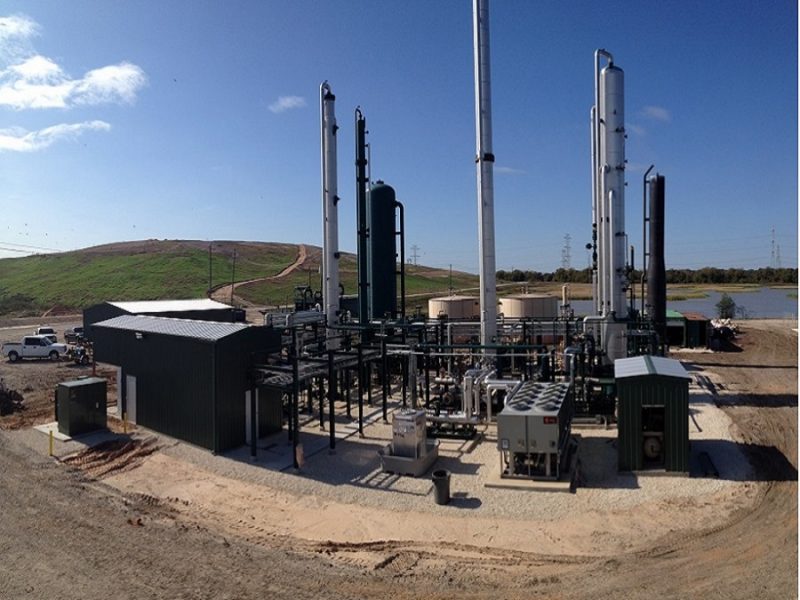In acquisition of Texas renewable gas facilities, DTE Biomass looks to expand landfill operations

With an announcement last week that it had acquired two landfill-based gas-to-energy operations in Texas, DTE Biomass Energy is looking to expand its contributions to alternative vehicle fuel.
The acquisitions were for the Fort Bend Power Producers, LLC facility outside of Rosenberg, Texas, and the soon to be constructed Seabreeze landfill gas development in Angleton, Texas.
When fully operational, the projects will bring the total number of DTE’s landfill conversion facilities which capture and convert dangerous landfill gases to pipeline-quality renewable natural gas to five. In these cases, that gas will go to fueling transit buses — more than 1,000 diesel vehicles supplied by each facility.
“There are several different groups who will benefit,” Kevin Dobson, vice president of Business Development for DTE Biomass Energy, told Daily Energy Insider. “The local community, for one. We’re capturing and converting pretty harmful greenhouse gas into useable energy. We’re taking this smelly, harmful greenhouse gas, capturing it and destroying it, putting it into use. We’re bringing permanent jobs into the area. As for utility and renewable energy consumers, we’re bringing them a product they need or want.”
“The landfill owners themselves also benefit. We share the economic benefits of these projects with them — and they can be owned by big companies all the way down to municipal-owned operations,” he added.
As for the jobs involved, the Fort Bend Facility currently employs six directly for DTE Biomass, and Seabreeze’s numbers are still being figured, but the construction side of things for both are expected to bring in sizeable numbers of jobs, according to Dobson.
The Changing Face of Energy
The acquisitions are part of a continuing shift to renewable energy that has been underway for decades.
DTE Biomass has been in the business for nearly 30 years now, and over that time, the nature of the business has changed from simple collect-and-destroy operations, to increasing public and private demand for renewable energy use. While renewables used to be nothing other than a fringe interest, Dobson said they have since entered the mainstream and are something that are, in one form or another, here to stay.
“Before the increased demand for renewable energy they were just collecting this gas to meet regulatory standards,” Dobson said. “We’ve seen a shift over the last few years to more renewable natural gas, to renewable electricity, one form to another. The tax credits and incentives over these past 30 years have also played an interesting part. There are times the federal government might want us to incent, and they’ll put tax credits out there to drive interest in the industry. Currently there are no federal tax incentives available. The rise and fall of natural gas projects have also influenced involvement. When gas prices a few years ago were a lot higher, that drove demand for RNG back and forth as well.”
Why landfills?
Landfills may lack the glamor or size of the more popularized solar and wind operations when it comes to renewable energy, but such operations bring a consistency and versatility to such efforts its competitors lack.
For one, landfill facilities are parked on existing landfills themselves — there is little to no sprawl involved. Such landfills are constantly producing harmful gases through decomposition of the landfills themselves. RNG operations thus work by drilling into the waste with wells and vacuuming gases out — mostly methane and carbon dioxide. From there, any number of uses can be found for it.
Whereas, according to Dobson, solar and wind must be used for electricity generation, the gases taken from landfills are not so restricted. Beyond electricity, they can be used to replace non-renewable resources such as coal, oil and natural gas, produce thermal energy and, in the case of high methane dumps, be processed (purified) to meet interstate pipeline standards and injected into those pipelines, replacing normal natural gas operations.
If no such designations are made, the gas is simply burned in flares to destroy the harmful greenhouse gases within.
Several factors figure into this.
“No. 1: the landfill itself,” Dobson said. “The size, the location, the remaining life of the landfill. The landfill has to be a certain size to be economically viable. If it’s in the middle of North Dakota, it’s not going to be as viable as say, in densely packed California. If the landfill has been around 30-40 years, the amount of gas remaining may or may not dictate it. We’ll also look at the actual gas characteristics coming from that landfill.”
Landfills with lower methane counts might be more inclined to electricity generation, where those with higher methane counts could be cleaned up and utilized for natural gas replacements and vehicle use. Naturally, government regulation and local demand also factor, though.
“What’s nice about landfill gas to energy projects, is we’re able to do two things,” Dobson said. “We’re collecting the harmful gas being emitted from landfills and putting it to beneficial use. The other thing is, as we’re producing electricity or renewable gas, that customer now doesn’t have to buy that same gas from a fossil fuel provider. We’re able to reduce the amount of fossil fuel in the economy, giving it a double whammy.”
